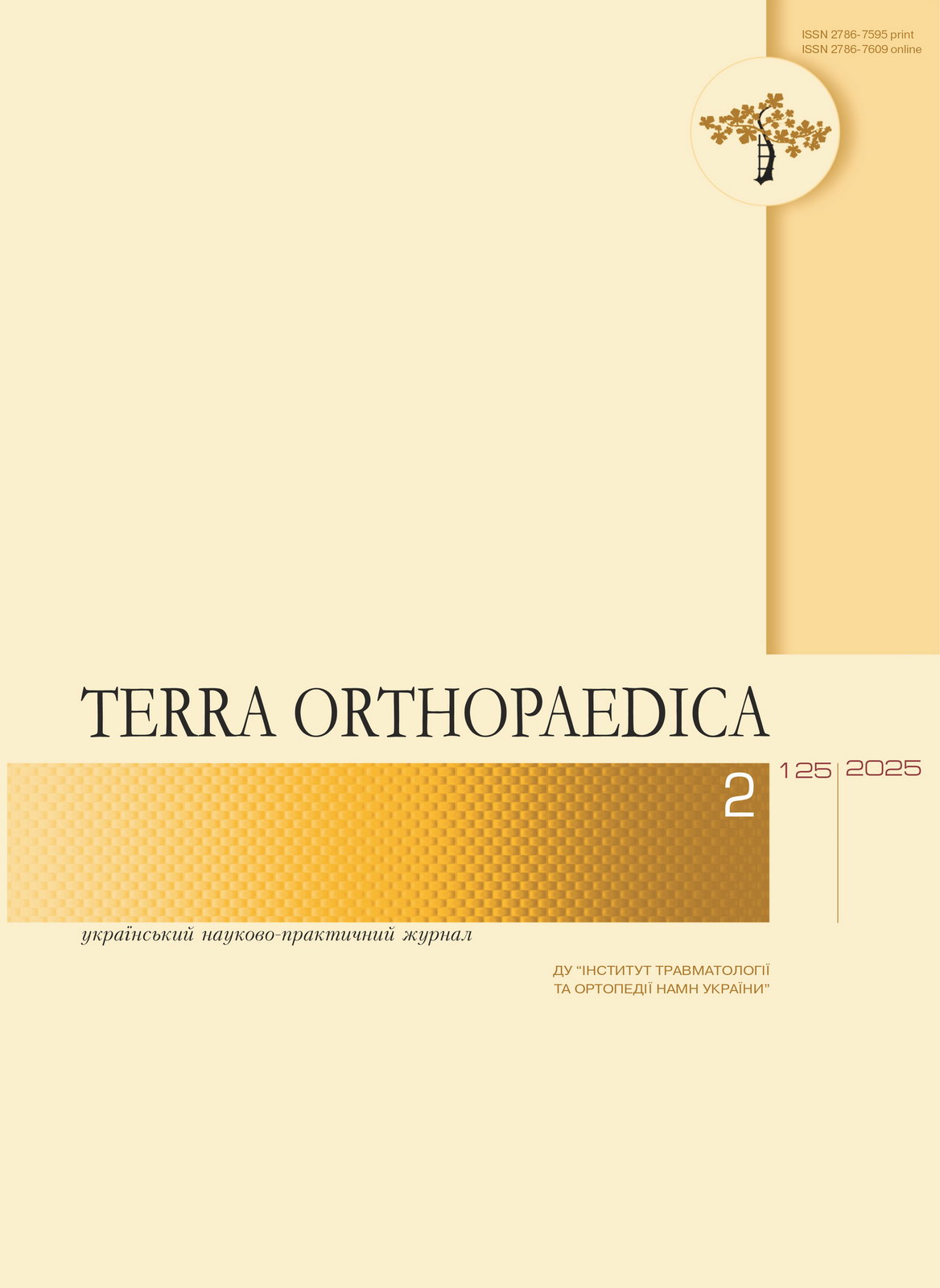Abstract
Introduction. The functioning of the shoulder muscles during shoulder joint arthroplasty cannot be overestimated. Current strategies for muscle preservation during arthroplasty include: 1) minimally invasive approaches, 2) precise positioning of endoprosthesis components, and 3) early mobilization and postoperative rehabilitation. Objective. This study aimed to evaluate the force contribution of individual muscles of the shoulder girdle during upper limb abduction in the shoulder joint. Materials and Methods. The model comprises six joints: acromioclavicular (articulatio acromioclavicularis - ac), sternoclavicular (articulatio sternoclavicularis - sc), glenohumeral (articulatio glenohumeralis - gh), humeroulnar (articulatio humeroulnaris - hu), humeroradial (articulatio humeroradialis - hr), and radiocarpal (articulatio radiocarpalis - rc). Force generation during upper limb abduction was assessed both without load and with a 2 kg weight. Results. The analysis revealed that the main muscle responsible for the abduction of the upper limb is m. deltoideus (acromial part). This portion of the deltoid muscle develops maximal force during the abduction of the arm. Other muscles mainly serve as stabilizers, maintaining the humeral head within the glenoid cavity, with their force directed opposite to the movement. It should be noted that the activity of the muscles studied in this work was most prominent within the abduction range of 30° to 50°, depending on their functional role during the movement. Beyond 50°, the scapula and its associated musculature become actively involved. Conclusions. The maximum force during abduction of the upper limb is generated by m. deltoideus (acromial part). As the abduction angle increases beyond 30°–50°, there is a decrease in rotator cuff muscle force or a transition to a “support mode.” These findings improve our understanding of the shoulder girdle muscle biomechanics and are significant for movement physiology.
References
Bergmann G, Graichen F, Bender A, Rohlmann А, Halder A, Beier A, et al. In vivo gleno-humeral joint loads during forward flexion and abduction. Journal of Biomechanics. 2011 May 1;44(8):1543–52. doi: 10.1016/j.jbiomech.2011.02.142.
Gutiérrez S, Comiskey CA, Luo ZP, Pupello DR, Frankle MA. Range of Impingement-Free Abduction and Adduction Deficit After Reverse Shoulder Arthroplasty. The Journal of Bone and Joint Surgery-American Volume. 2008 Dec;90(12):2606–15. doi: 10.2106/JBJS.H.00012.
Wu J, Bordoni B. Anatomy, Shoulder and Upper Limb, Scapulohumeral Muscle [Internet]. PubMed. Treasure Island (FL): StatPearls Publishing; 2020. Available from: https://www.ncbi.nlm.nih.gov/books/NBK546633/
Edwards TB, Kadakia NR, Boulahia A, Kempf JF, Boileau P, Némoz C, et al. A comparison of hemiarthroplasty and total shoulder arthroplasty in the treatment of primary glenohumeral osteoarthritis: results of a multicenter study. Journal of Shoulder and Elbow Surgery. 2003 May;12(3):207–13. doi: 10.1016/s1058-2746(02)86804-5.
Gutiérrez S, Levy JC, Frankle MA, Cuff D, Keller TS, Pupello DR, et al. Evaluation of abduction range of motion and avoidance of inferior scapular impingement in a reverse shoulder model. Journal of Shoulder and Elbow Surgery. 2008 Jul;17(4):608–15. doi: 10.1016/j.jse.2007.11.010.
Ackland DC, Roshan-Zamir S, Richardson M, Pandy MG. Muscle and joint-contact loading at the glenohumeral joint after reverse total shoulder arthroplasty. Journal of Orthopaedic Research. 2011 May 12;29(12):1850–8. doi: 10.1002/jor.21437.
Berliner JL, Regalado-Magdos A, Ma CB, Feeley BT. Biomechanics of reverse total shoulder arthroplasty. Journal of Shoulder and Elbow Surgery. 2015 Jan;24(1):150–60. doi: 10.1016/j.jse.2014.08.003.
Lädermann A, Walch G, Lubbeke A, Drake GN, Melis B, Bacle G, et al. Influence of arm lengthening in reverse shoulder arthroplasty. Journal of Shoulder and Elbow Surgery. 2012 Mar;21(3):336–41. doi: 10.1016/j.jse.2011.04.020.
Roche CP, Diep P, Hamilton M, Crosby LA, Flurin PH, Wright TW, et al. Impact of inferior glenoid tilt, humeral retroversion, bone grafting, and design parameters on muscle length and deltoid wrapping in reverse shoulder arthroplasty. Bulletin of the Hospital for Joint Disease (2013) [Internet]. 2013;71(4):284–93. Available from: https://pubmed.ncbi.nlm.nih.gov/24344621/
Berhouet J, Garaud P, Favard L. Evaluation of the role of glenosphere design and humeral component retroversion in avoiding scapular notching during reverse shoulder arthroplasty. J Shoulder Elbow Surg. 2014 Feb;23(2):151-8. doi: 10.1016/j.jse.2013.05.009.
Chadwick EK, Blana D, Kirsch RF, van den Bogert AJ. Real-time simulation of three-dimensional shoulder girdle and arm dynamics. IEEE Trans Biomed Eng. 2014 Jul;61(7):1947-56. doi: 10.1109/TBME.2014.2309727.
Moser T, Lecours J, Michaud J, Bureau NJ, Guillin R, Cardinal É. The deltoid, a forgotten muscle of the shoulder. Skeletal Radiol. 2013 Oct;42(10):1361-75. doi: 10.1007/s00256-013-1667-7.

This work is licensed under a Creative Commons Attribution 4.0 International License.
